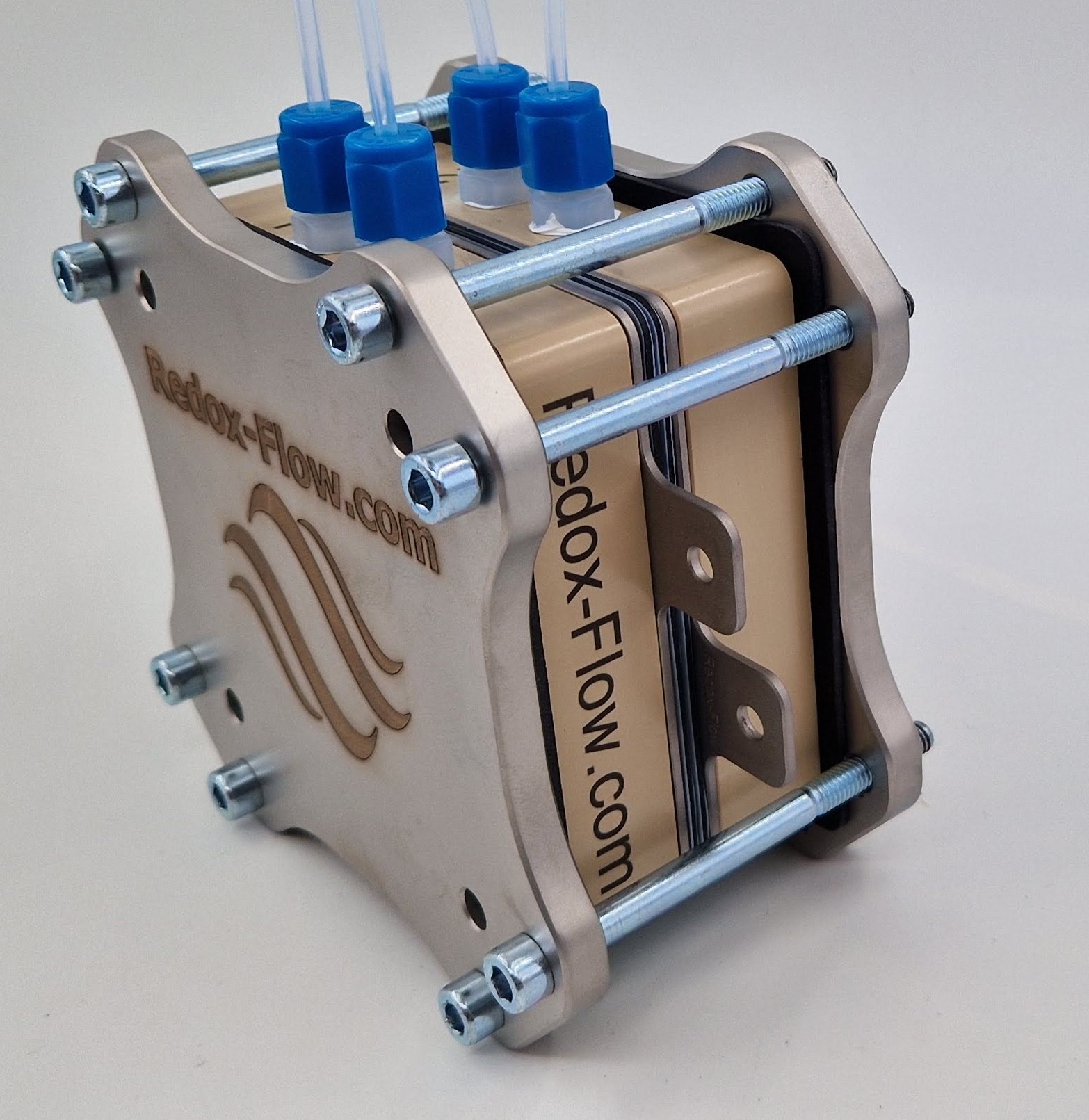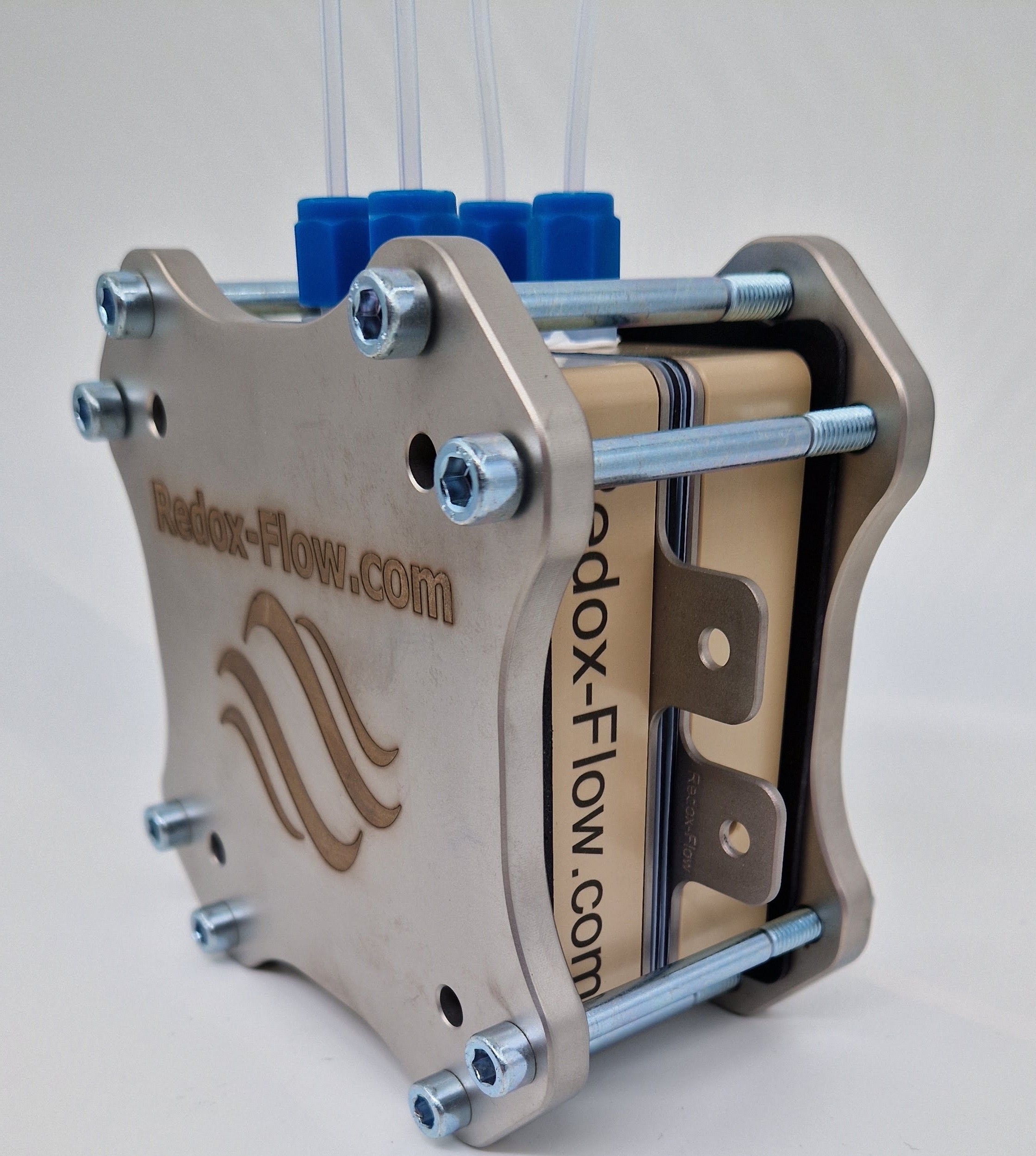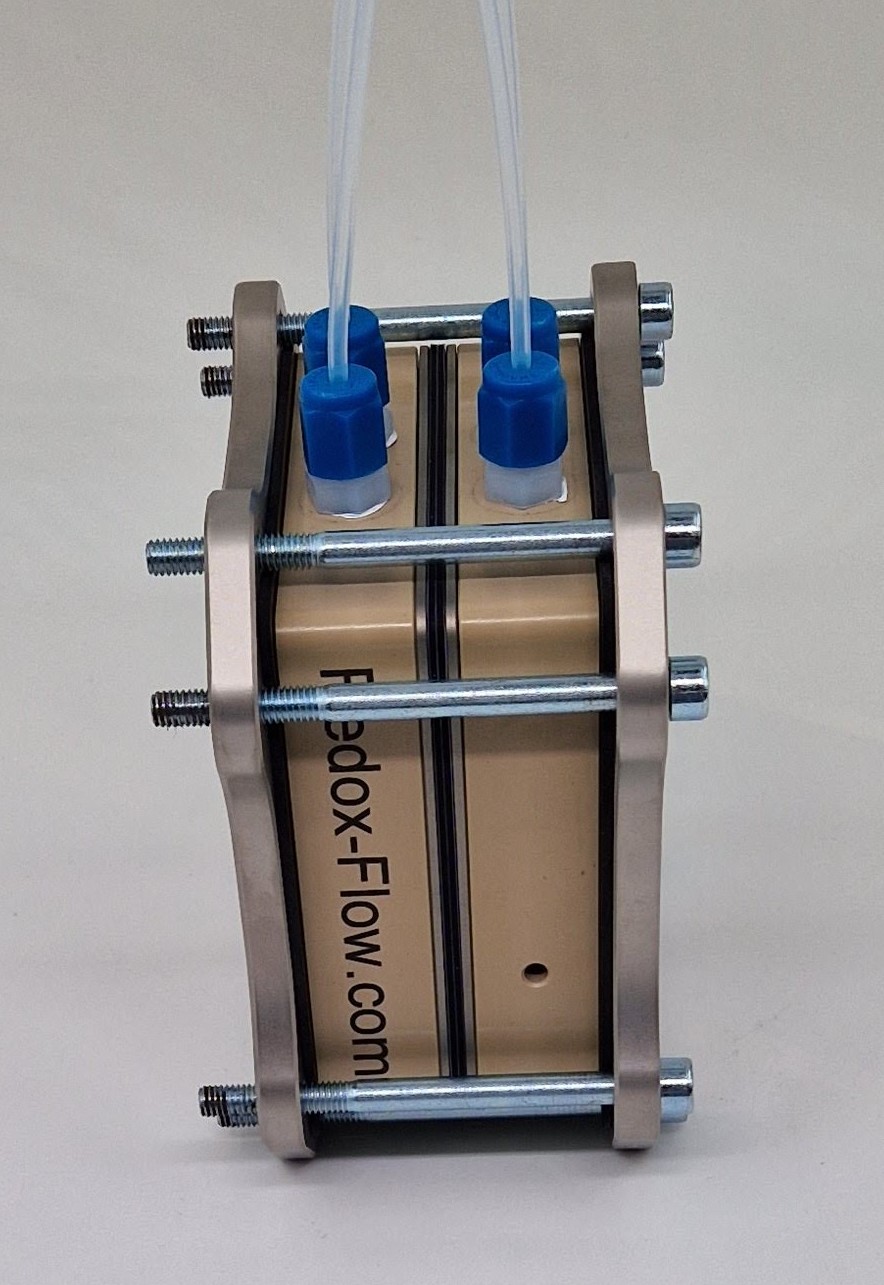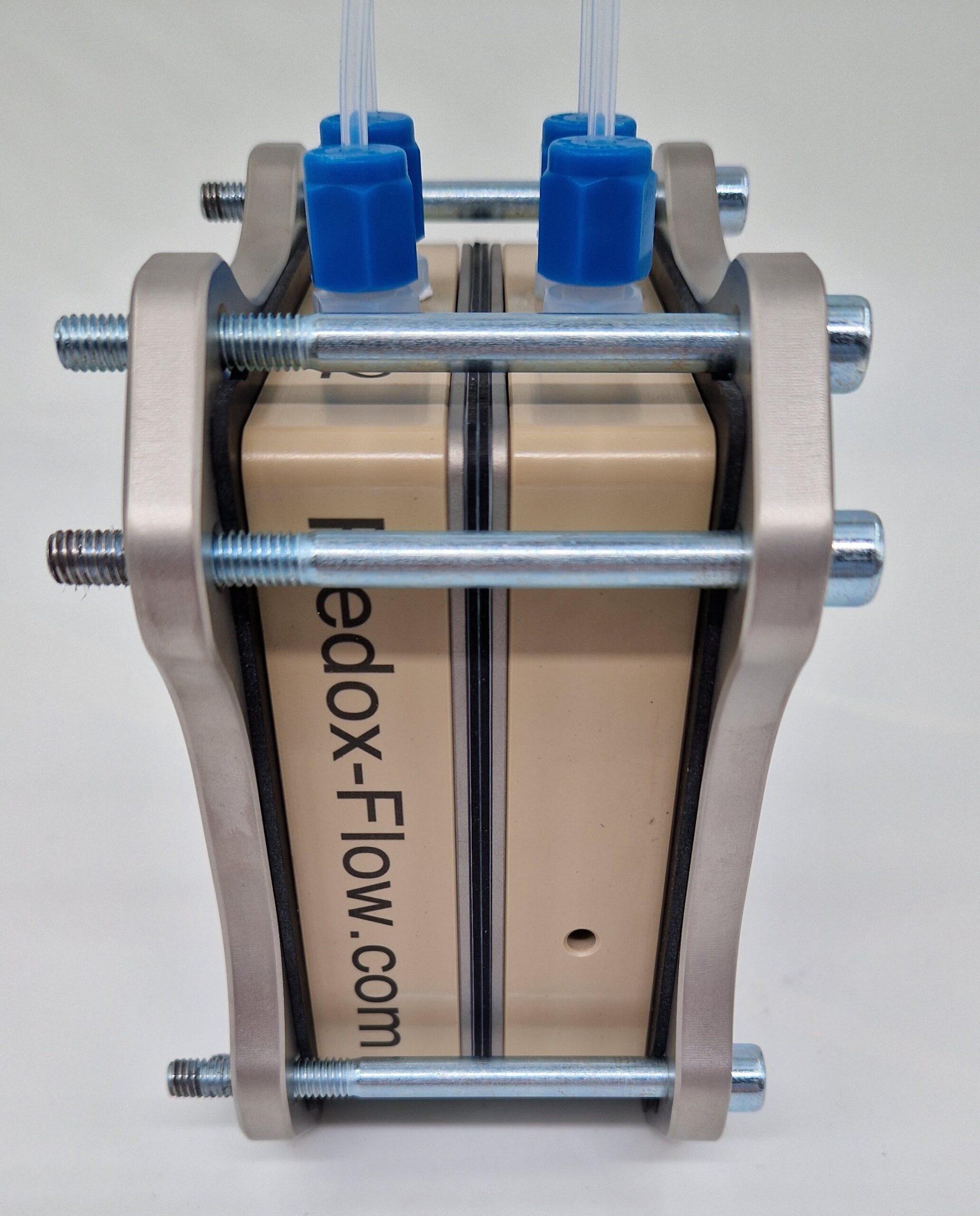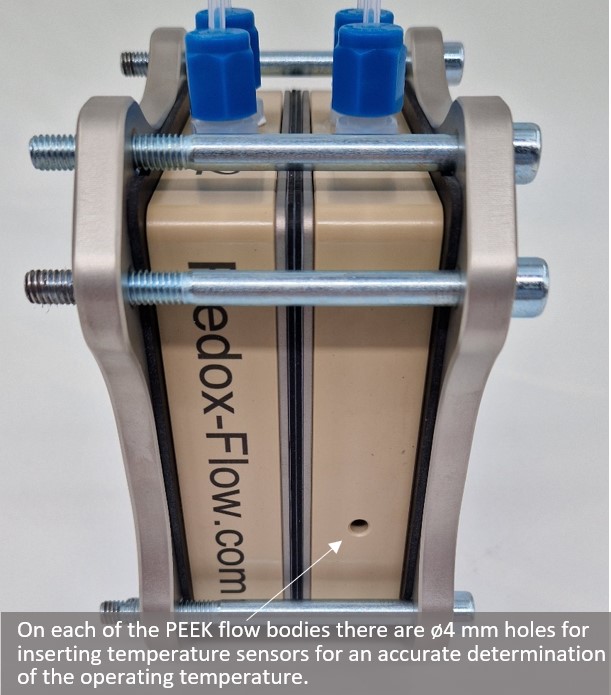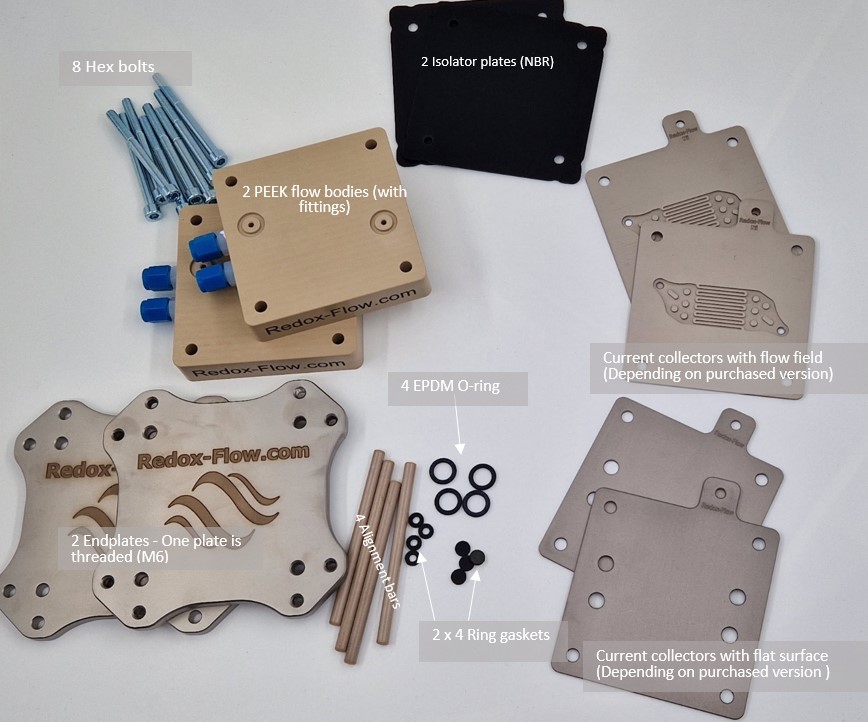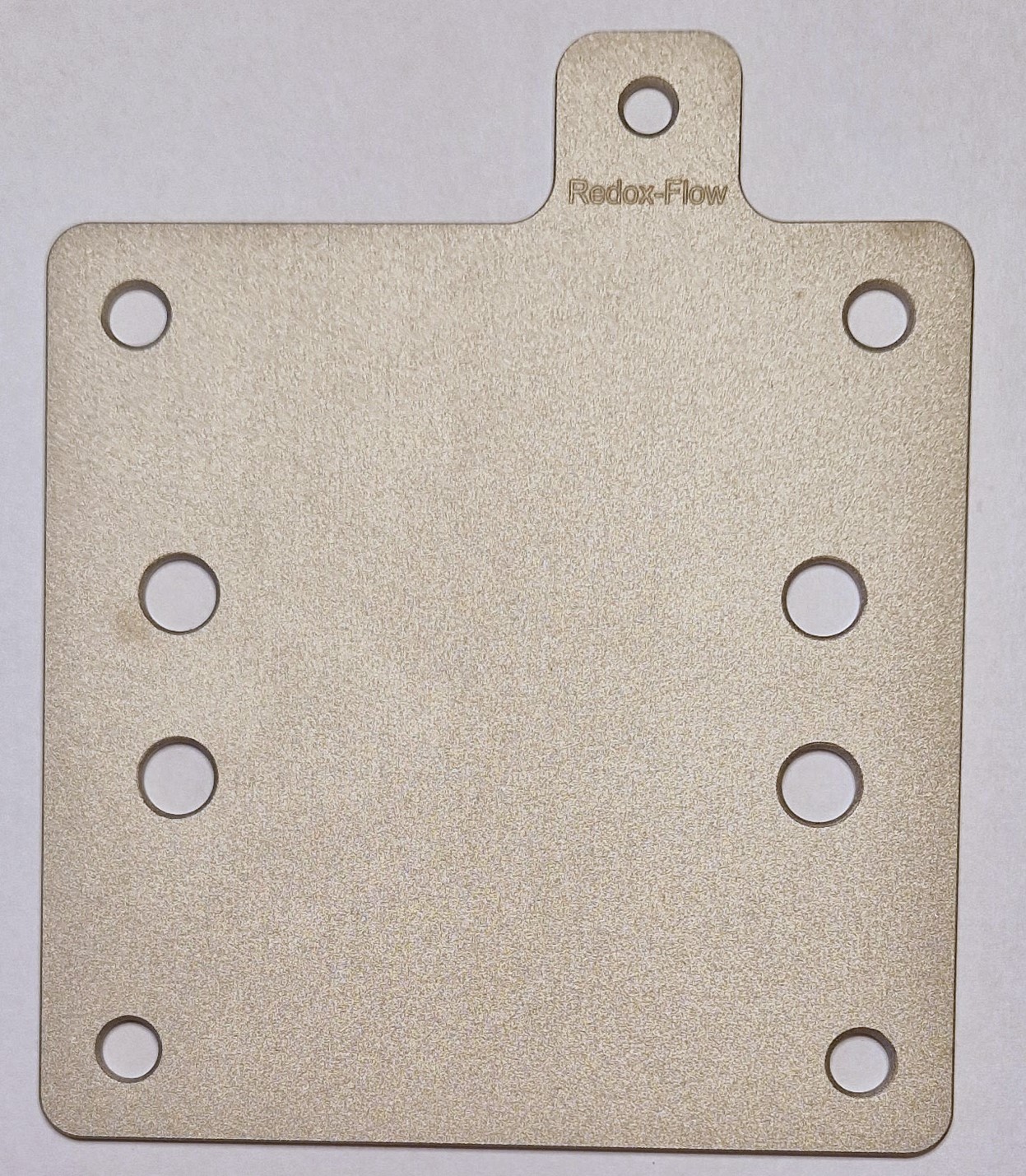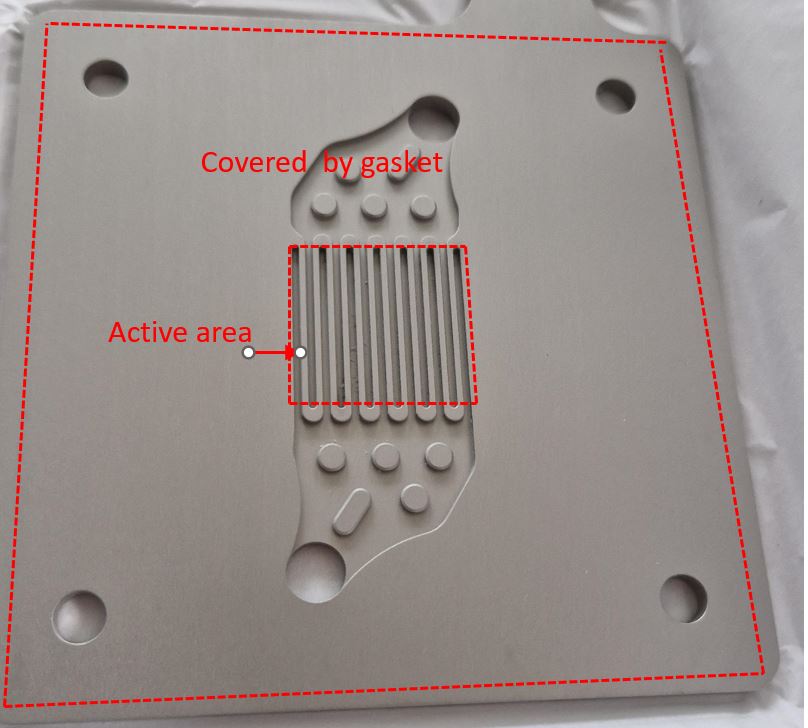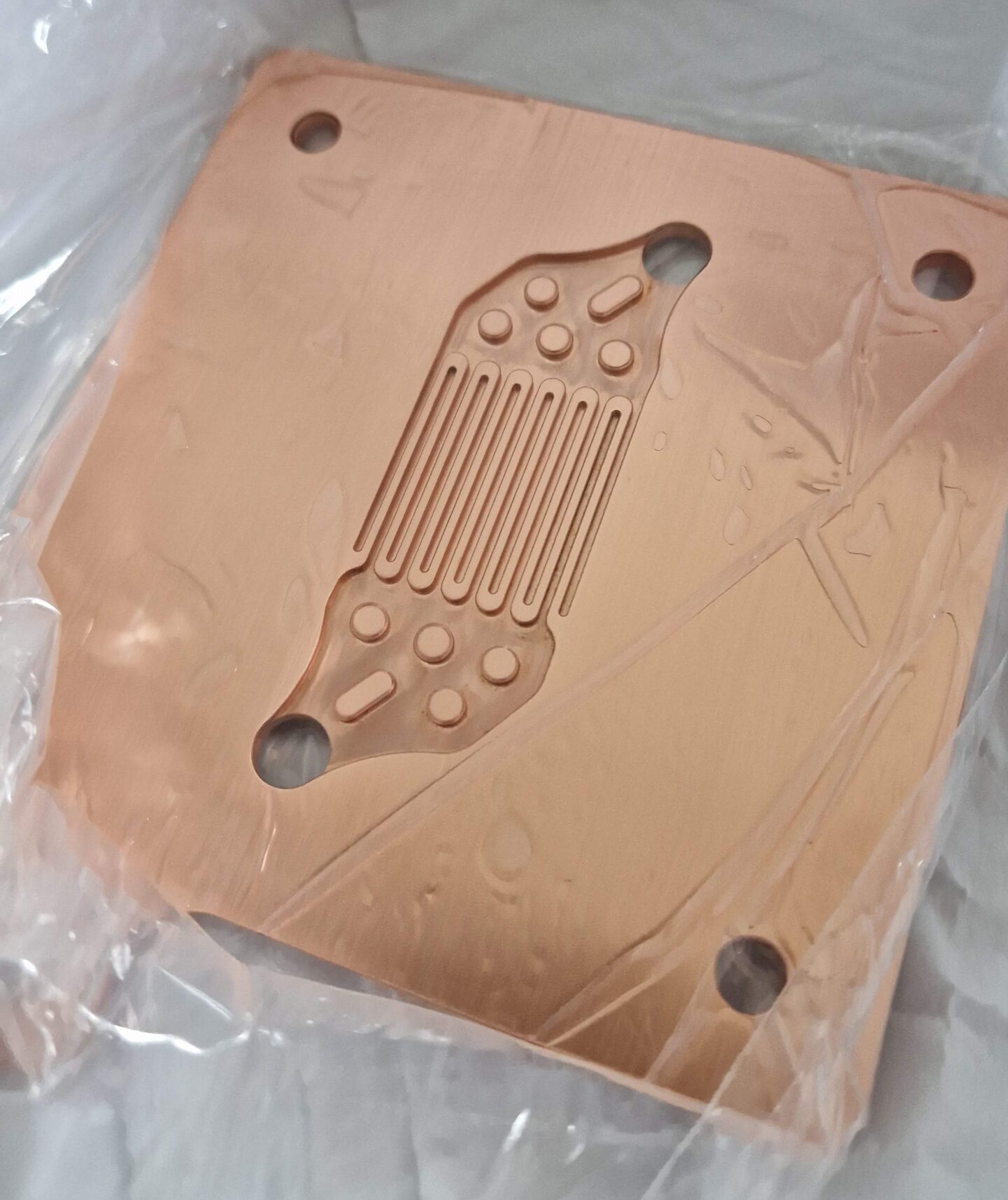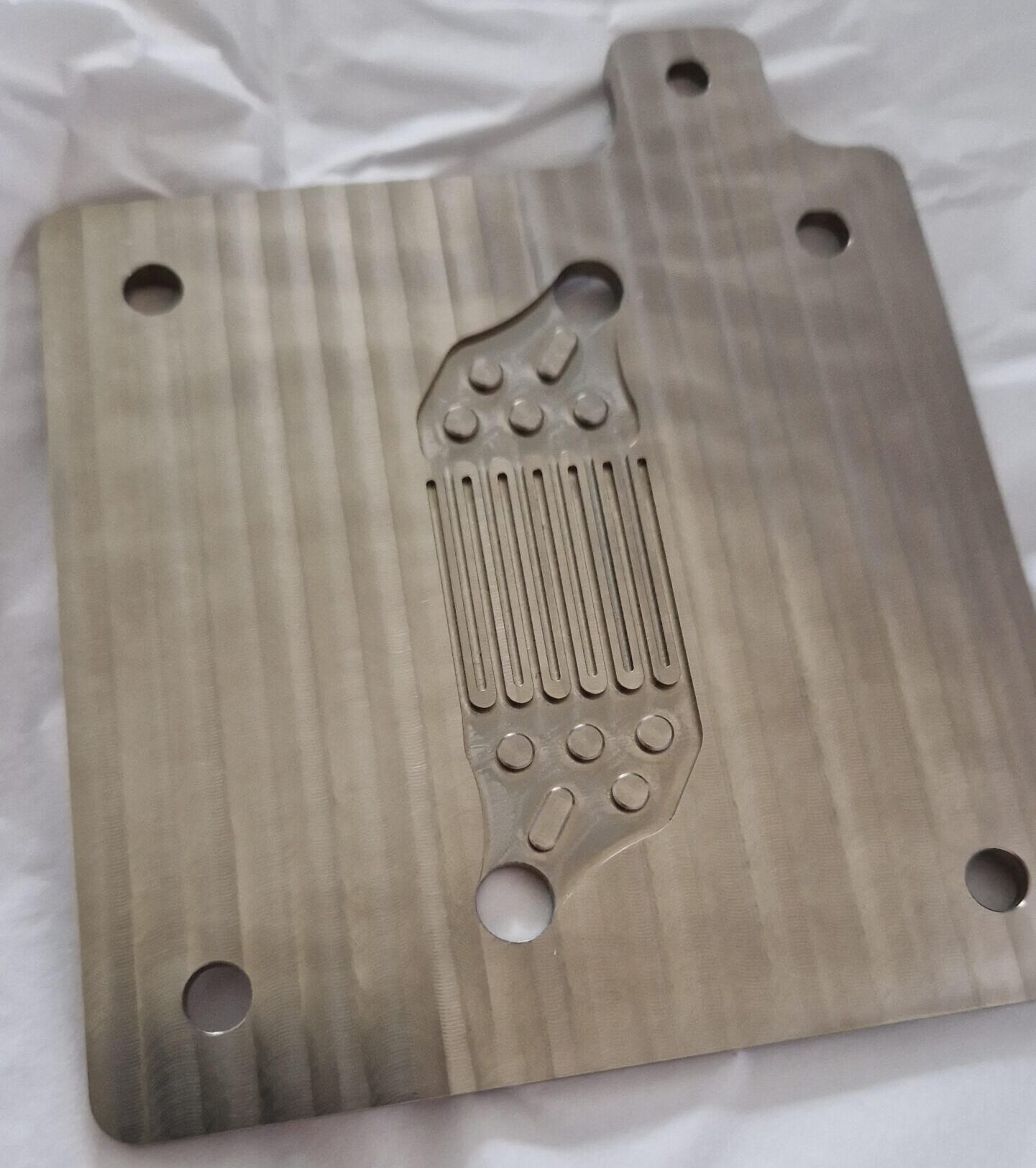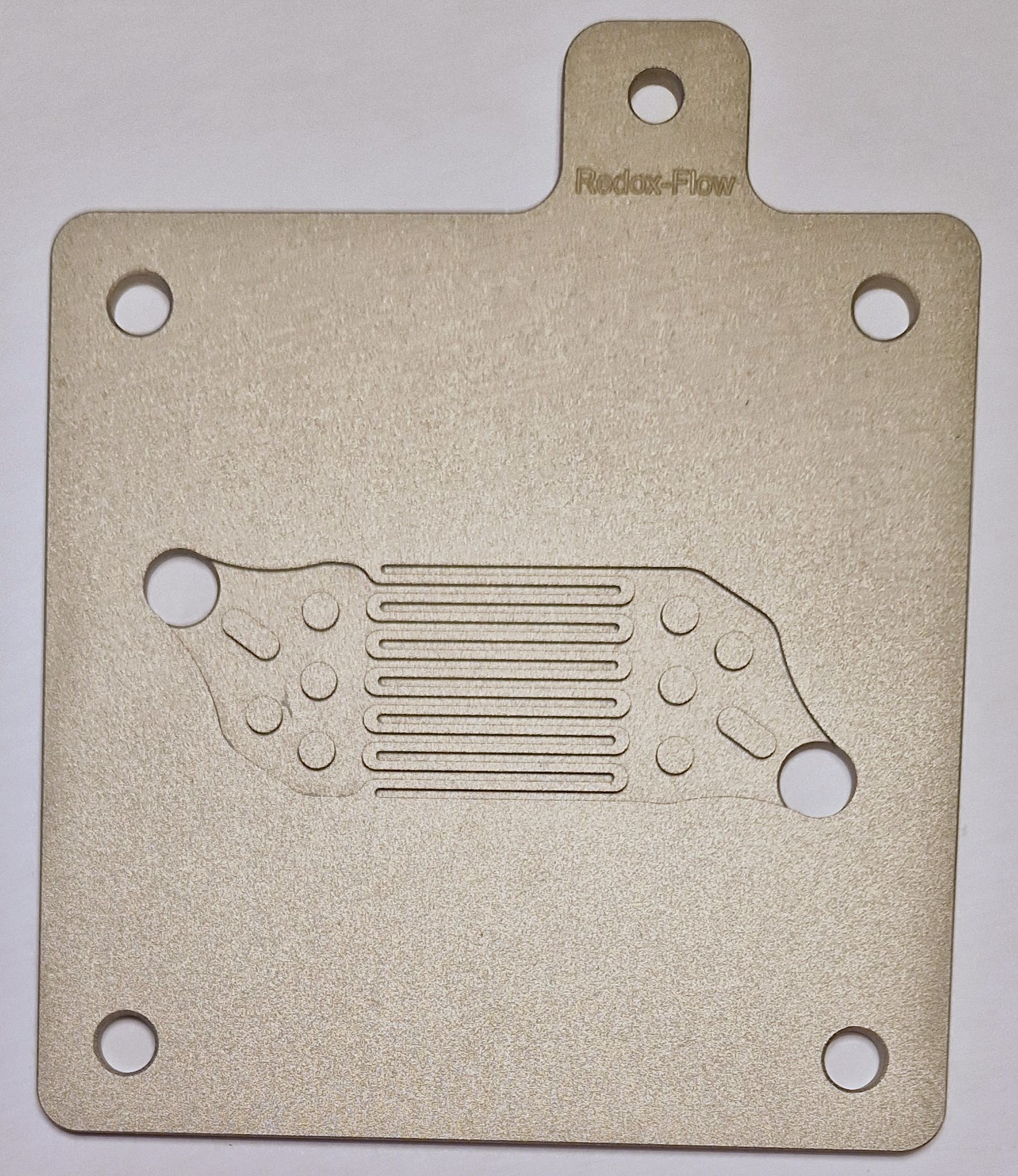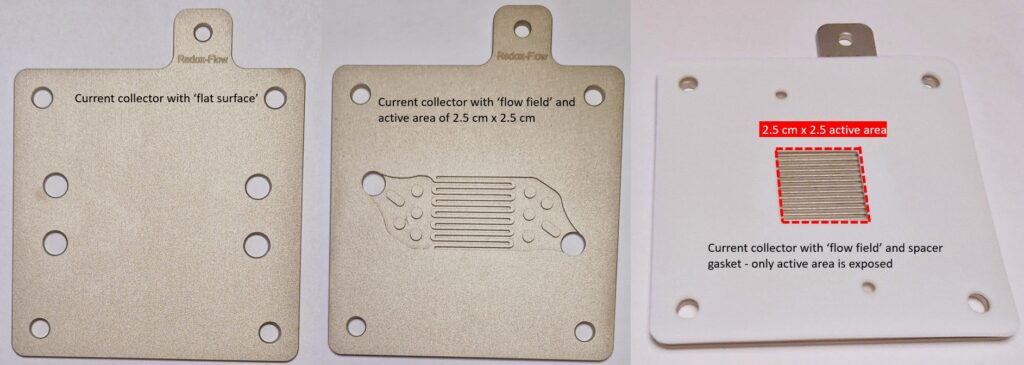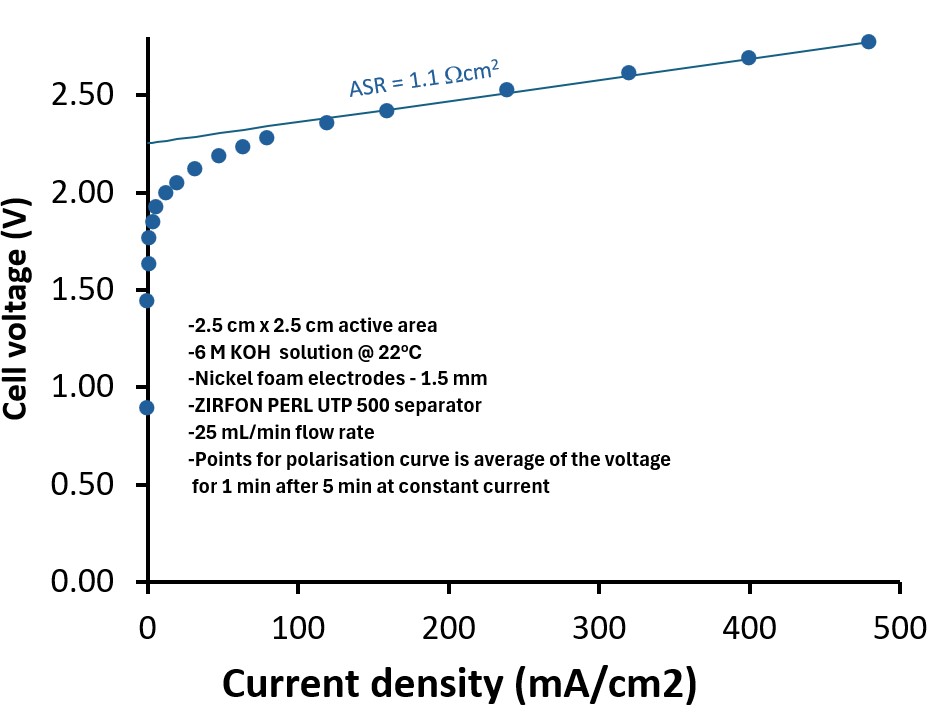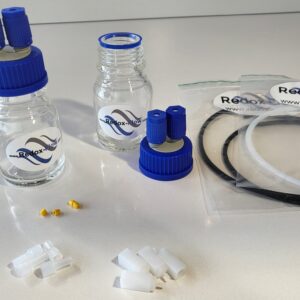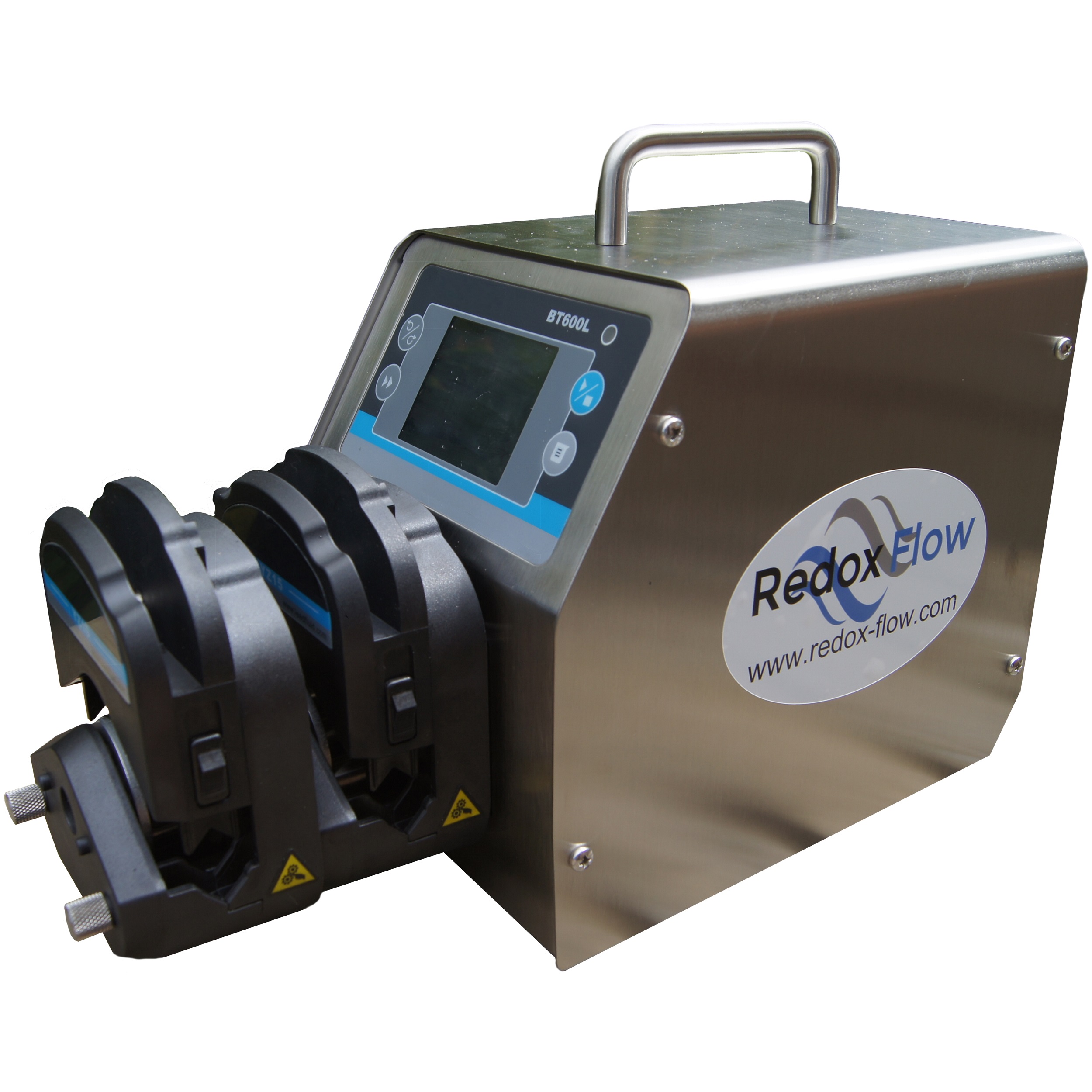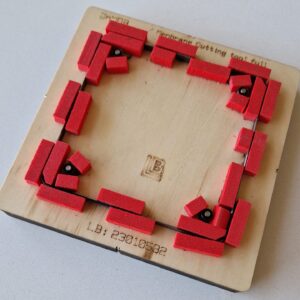DESCRIPTION: The electrochemical flow cell consists of flow bodies machined in corrosion resistant PEEK and with current collectors in either nickel, titanium, stainless steel or copper as standard material.The X-cell has essentially the same design as the S-cell but with the flow body made in PEEK instead of Graphite (S-cell).
Some of the unique features of the X-cell are
- Interchangeability between the current collectors w/wo flow fields in Nickel, Stainless Steel, Copper, Titanium + more on request.
- On request in can also be combined with a S-cell graphite flow body on one side. E.g. a Titanium current collector on the positive side and a S-cell graphite flow body on the negative side.
- Chemical resistance and no leaching of metals that potentially pollutes catalysts
- High temperature operation (< 90°C)
- Can be converted into a A or S-cell by purchase of A or S-cell graphite flow body. Combined the A, S and X-cells allows virtually testing of any type of electrochemical energy conversion technologies – Flow batteries, Alkaline Water Electrolysis, Anion exchange membrane water electrolysis, Zero Gap electrolysis, PEM water electrolysis, CO2 electrolysis, PEM/Alkaline fuel cells – that can be operated to high temperatures and in the full pH range
There are two basic configurations – current collectors with ‘flat surface’ or with ‘flow field’, see images below.
They can combined in what we term ‘Build-Your-Own-Cell’. E.g. current collector with flow field on one side and current collector with ‘flat surface’ on the other in any materials combination (Nickel, Stainless Steel, Copper, Titanium).
GASKETS & ELECTRODE THICKNESS: Due to the many variations, cells are sold without gaskets that has needs to be ordered individually and is described below.
Flat current collectors: The main components of this configuration is shown in the image below – (Click on picture to get higher resolution)  The configuration is intended for thick electrodes (> 0.5-1.0 mm). I.e. flow rate can become too low with decreasing electrode thickness because the hydraulic resistance increases. For this configuration the following gasket must be ordered individually:
The configuration is intended for thick electrodes (> 0.5-1.0 mm). I.e. flow rate can become too low with decreasing electrode thickness because the hydraulic resistance increases. For this configuration the following gasket must be ordered individually:
Cover/Spacer gaskets (click on link)
Flow field gaskets (click on link)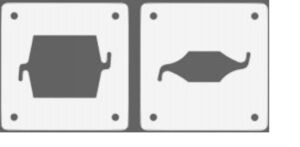 To minimize the pressure loss inside the cell it is recommended to use as-thick-as-possible Flow field gaskets and use Cover/Spacer gaskets to adjust the final thickness/compression of the electrode. The final compressed electrode thickness is the sum of the thicknesses of both the Flow field gaskets and Cover/Spacer gaskets, here several gaskets (and materials) and thicknesses can be combined. In our gaskets products we offer packs of different gasket thicknesses, and we recommend these as these will allow you to test virtually any electrode thickness and compression.
To minimize the pressure loss inside the cell it is recommended to use as-thick-as-possible Flow field gaskets and use Cover/Spacer gaskets to adjust the final thickness/compression of the electrode. The final compressed electrode thickness is the sum of the thicknesses of both the Flow field gaskets and Cover/Spacer gaskets, here several gaskets (and materials) and thicknesses can be combined. In our gaskets products we offer packs of different gasket thicknesses, and we recommend these as these will allow you to test virtually any electrode thickness and compression.
Membrane/Separator gasket – Optional, only needed for porous separators to prevent leaking out through the side of the porous separator.
Current collectors with flow field: The main components of this configuration is shown in the image below – (Click on picture to get higher resolution)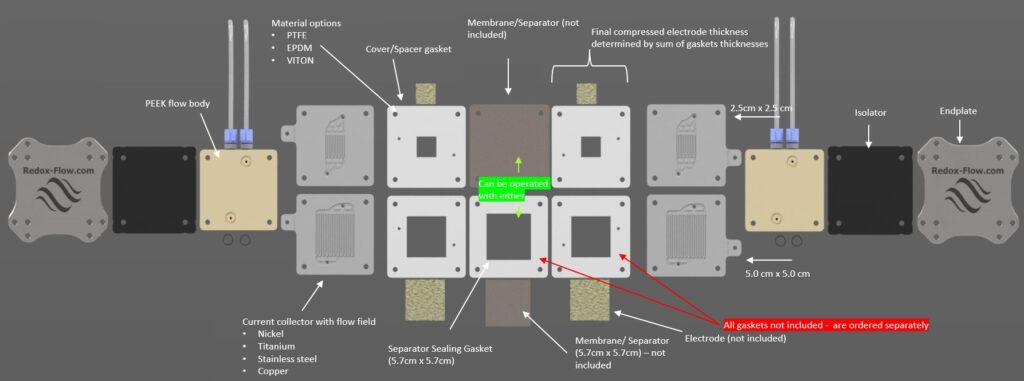
This configuration is intended for thin electrodes (<0.5-1.0 mm). I.e. the interdigitated flow minimises pressure loss for very thin electrodes. For this configuration the following gasket must be ordered individually:
Cover/Spacer gaskets (click on link)
 The final compressed electrode thickness is the sum of the thicknesses of both the Cover/Spacer gaskets, here several gaskets (and materials) and thicknesses can be combined. In our gaskets products we offer packs of different gasket thicknesses, and we recommend these as these will allow you to test virtually any electrode thickness and compression.
The final compressed electrode thickness is the sum of the thicknesses of both the Cover/Spacer gaskets, here several gaskets (and materials) and thicknesses can be combined. In our gaskets products we offer packs of different gasket thicknesses, and we recommend these as these will allow you to test virtually any electrode thickness and compression.
Membrane/Separator gasket – Optional, only needed for porous separators to prevent leaking out through the side of the porous separator.
CURRENT COLLECTORS
Current collectors for the X-cell can also be bougth induvidually here – Current collectors (click on link), i.e. if different materials or with or without flow field is needed for the same cell.
GENERAL DESCRIPTION
The cell has been developed for Alkaline water electrolysis, Anion exchange membrane water electrolysis (AEMWE), PEM electrolysis and CO2 electrolysis, but can be used as a general electrochemical flow cell e.g. fuel cell, non-aqueous electrochemical systems etc. This is also reflected in the many standard material options that are available for the cell.
Besides the current collectors and electrodes the electrolyte will only be in contact with corrosion resistant polymers which is important to ensure that e.g. electrodes/catalysts are not poisoned from dissolution of e.g. metals in the cell. Also it can be operated in the full pH range (depending on materials choices) and to elevated temperatures (95°C).
Compared to any similar product on the market, some of the unique features are
- The active area can easily be switched between 2.5cm x 2.5cm and 5cm x 5cm
- The current collectors can be bought individually in different materials (nickel, titanium, stainless steel or copper) with and without interdigitated flow field
- Due to interchangeability of gaskets and current collectors, the cell can be used for many different applications within electrolysis and fuel cells
The X-cell can be powered by the 8-channel battery tester. In addition, it can be connected with the Differential Pressure Unit that will allow measurement of pressure loss over cell and thereby electrode permeability. Also it can be connected with Flow Through Electrode Holder for e.g. inline monitoring of pH, ORP, reference, conductivity or any other electrode. Signals from pressure sensors and electrodes can be recorded in AUX Unit, which combined form an extremely powerful tool for both basic electrolyser research and optimisation studies.
PERFORMANCE DATA
Figure below shows the polarization curve for a setup with nickel foam electrodes, 6 M KOH measured at room temperature. Here an area specific resistance of about 1.1 Ωcm2 is found and the activation voltage is about 2.2 V. This is similar to the values found in litterature recorded under similar conditions, thus the ‘relatively’ poor performance is because of the low temperature and that the electrodes are untreated (no catalysts). Thus much better performance can be obtained with higher temperature, thinner separator and treated electrodes.
TECHNICAL SPECIFICATIONS:
- Active Area: 2.5cm x 2.5cm and 5cm x 5cm – for other active areas please make an inquiry
- Current collectors with and without flow field – any electrode thicknesses
- Main flow body is machined in highly corrosion resistant PEEK
- Can be operated up to 95°C
- Full pH range – depending on current collector and gasket materials
- Standard materials for current collectors: Nickel, Titanium, Stainless Steel and Copper – for other materials please make an inquiry, we can do many
- Swagelok fittings for tight connecting to 1/8” tubing – For other tubing dimensions please make a request
- Gaskets/Spacers Materials: PTFE, EPDM or VITON
OTHER RESOURCES

